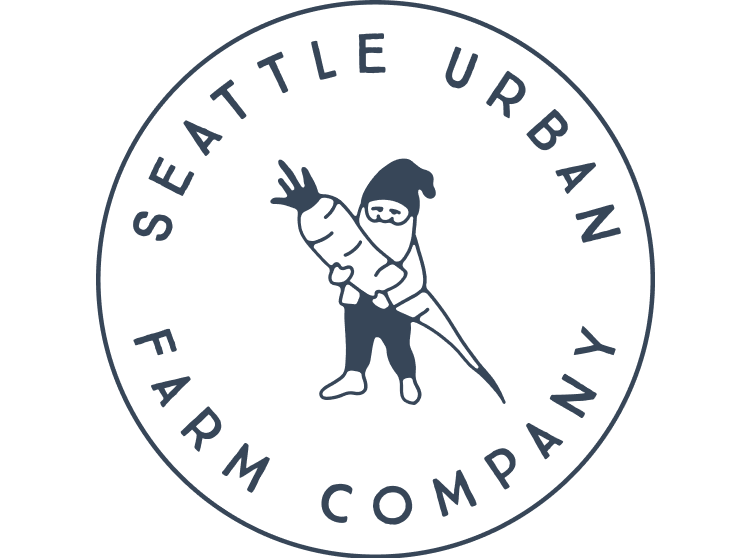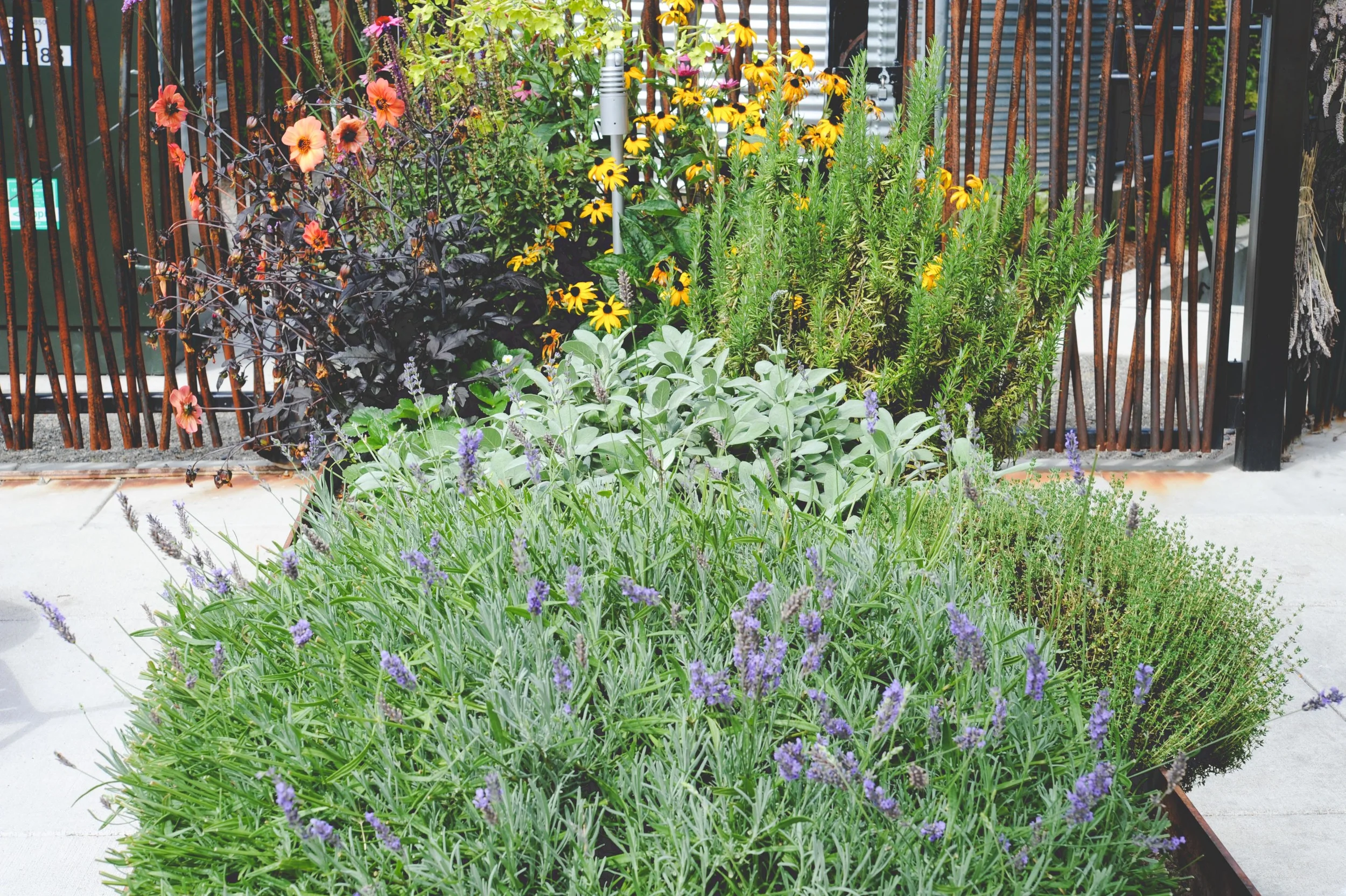This time of year many perennial herbs are flowering or just about to flower. It is important to cut back perennial herbs because the stems that flower will soon die and turn woody. If you look closely at a healthy flowering perennial herb plant, you will notice that there is new growth pushing up from the base of the plant. By cutting back the old growth you are making room for those new shoots!
Ideally, you want to cut back your herbs before they flower, but many of us like to enjoy the colorful display that most perennial herb flowers provide and cutting them after they have flowered is just fine.
Each herb has different requirements as to how much of the plant should be cut back. For example: oregano should be cut back almost to the ground, but lavender and sage only needs a gentle trimming to remove the flowers. Keep reading for a list of common perennial herbs and accompanying notes on care and storage.
Below: Flowering oregano and a pruned lavender plant next to an unpruned plant.
Woody Perennials:
Bay, Laurus nobilis: Great large, evergreen edible plant. Can be grown as a full sized tree (20-30’) or pruned to stay small, even grown in a container. Can be sensitive to hard frosts, so plant in a protected location if possible or bring into shelter during winter. Prune as needed and dry leaves for long-term storage.
Lavender, Lavandula angustifolia: Culinary English varieties are available (Provence). Cut when flower buds just begin to open. Cut back about 1/3rd of the plant each season when in bloom or just after bloom to keep in shape over time. I usually cut back to where the tall flowering stems emerge from the softer foliage.
Oregano, Origanum vulgare: Best culinary types are Italian and Greek. Also consider adding Golden Oregano for more color. Important to harvest before flowering for best leaves. Flowering stalks will turn woody and leggy. Cut plant back down to 1-3 inches above ground after flowering. New growth will emerge from the base of the plant. Takes on more flavor as it dries.
Rosemary, Rosmarinus officinalis: Best culinary variety is Tuscan Blue, but it can be damaged or killed in colder winters (especially young plants). A more cold tolerant type is Arp, but is not as tasty or as attractive as Tuscan Blue. Add in prostrate rosemary on borders and in rockeries. Cut as needed.
Sage, Salvia officinalis: Most vigorous and best for cooking is common garden sage. Other types are less cold hardy and tend to have more pest/disease issues. Cut back each season to keep in shape. Use leaves fresh or dried.
Thyme, Thymus vulgaris: Best tasting are English and lemon thyme. Cut back each season before blooming for best leaves. Can die over winter if cut back too late in fall or too early in spring. Dry inside for long-term storage.
Soft Perennials:
Chives, Allium schoenoprasum: One of the easiest herbs to grow. Can be cut back as many times as you like. Flowers and stems can be eaten fresh.
Fennel, Foeniculum vulgare: Difficult to control, invasive perennial. You may already have it! Can be grown in a container or consider growing annual fennel bulb for similar flavor. Perennial fennel can be cut all the way down to the ground at any point during the season.
Hyssop, Agastache foeniculum: Anise hyssop has beautiful flowers (pink or blue or purple). Attracts beneficial insects. Leaves and flowers are edible and have unique taste (mint/sage/licorice). Cut as needed during summer, cut back to 1" above soil in fall.
Lovage, Levisticum officinale: Easy to grow, vigorous. Tall plant. Use leaves in soups or salads. Taste is similar to celery.
Mint, Mentha species: Many varieties to choose from. Notorious for escaping and taking over garden spaces. Plant in a container or bury a bottomless container into the garden to help contain. Can be cut all the way back (down to about 1-2" above soil) several times per season. Use fresh or bring inside to dry for long term storage.
Below: Healthy, trimmed perennial herbs and flowers.




